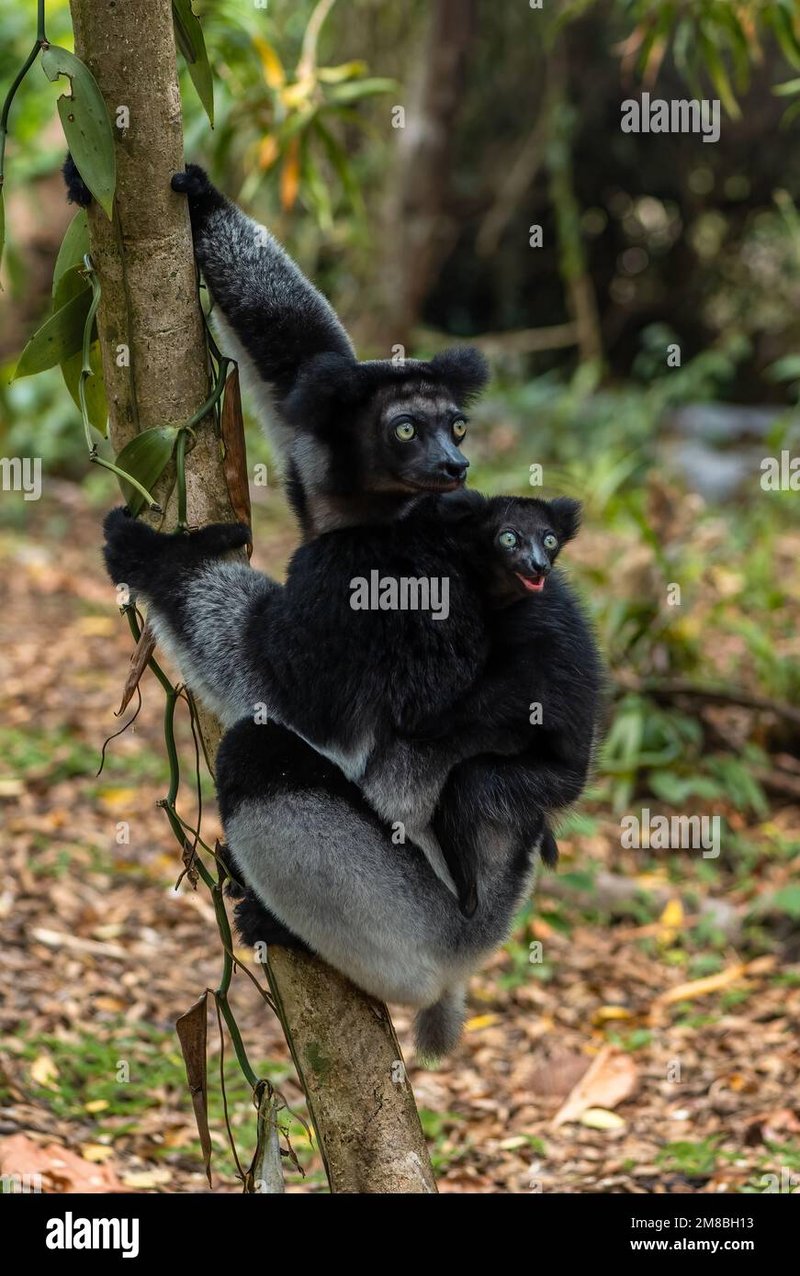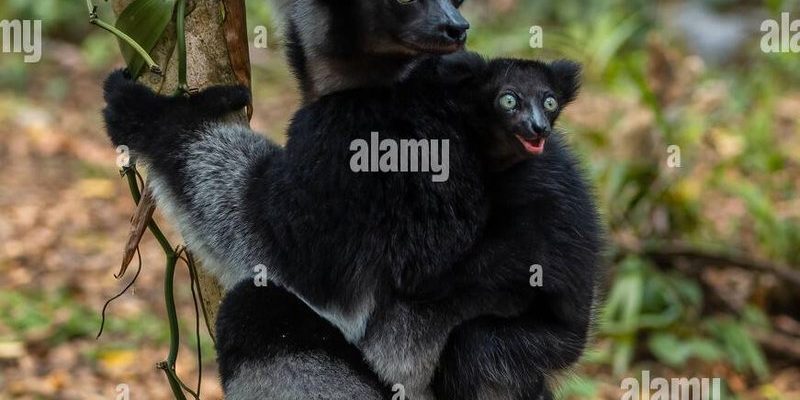
So, let’s dive into the world of Indris and clear up some of the confusion surrounding these captivating creatures. We’ll explore common myths, provide facts to counter them, and help you appreciate what makes the Indri so special. Grab your favorite warm drink and let’s get started!
The Indri Isn’t a True Lemur
You might be surprised to learn that the Indri is actually not a true lemur, despite being one of the largest members of the lemur family. The Indri belongs to a unique family called Indriidae, which is distinct from the other lemur families. They’re sometimes referred to as “giant lemurs,” but this term can be misleading.
Indris have some unique characteristics that set them apart from their more well-known cousins. For instance, they can weigh up to about 20 pounds and measure up to 3 feet long, including their tail—though they actually have no tail! Instead, they have a stubby tail that makes them look even more unique. Their body structure gives them a powerful build that’s perfect for leaping between trees in their rainforest habitat.
Indris Are Just Noisy Animals
You might have heard that Indris are just loud and raucous creatures, and while they do have a distinctive and loud call, this isn’t the whole story. Their vocalizations are a crucial part of their social structure. Indris use these calls to communicate with each other, especially over long distances in dense forests.
Imagine a concert where each member has their own part to sing. The calls of the Indris serve as their way of keeping in touch with their group members. These calls can even help them defend their territory from other groups. They may seem like they’re just making noise, but their sounds play a significant role in survival and socialization.
Indris Are Simply Solitary Creatures
Another common myth is that Indris are solitary animals. In reality, they are social beings that often form family groups. These groups usually consist of a mating pair and their offspring. You may picture them swinging through trees all alone, but they actually rely on their family for support and protection.
Being social creatures means Indris engage in grooming behaviors and play, which help strengthen bonds within the group. Just like humans, they thrive in their social structures. Their family units work together to raise young ones, with all members contributing to the group’s well-being.
They Only Eat Leaves
You might think that the Indri is strictly a leaf eater, but their diet is a bit more varied. While they do love munching on leaves, they also enjoy fruits and flowers. Their favorite food is the leaves from the endemic trees, like the ficus and bamboo.
Since their diet includes a range of plant materials, it shows just how adaptable they are. This flexibility is vital for survival, especially in their limited habitat. Their selective eating habits also play a crucial role in maintaining the health of the forest ecosystem, as they help disperse seeds.
Indris Have a Short Lifespan
Many people misunderstand how long Indris live. Some believe that they only survive a few years in the wild, but that’s far from the truth. In the wild, Indris can live for over a decade, and in captivity, they may reach up to 20 years!
This longer lifespan is important as it allows them to establish strong family bonds and successfully raise offspring. Imagine the challenges they face as they navigate their dense forest habitat. Their longevity helps them overcome these hurdles, ensuring the survival of their species.
Conservation Status: They Are Thriving
One myth floating around is that Indris are thriving and have no conservation concerns. This couldn’t be further from the truth. The IUCN lists the Indri as Critically Endangered due to habitat destruction and hunting. Destruction of their rainforest habitat is pushing them closer to the brink of extinction.
Conservation efforts are critical to ensuring these fascinating primates continue to thrive in Madagascar. Local organizations and global partners are working together to protect their areas, raise awareness, and promote sustainable practices. Protecting the Indri ultimately helps the local ecosystem, which benefits everyone.
Indris Are Not Intelligent Animals
There’s a notion that Indris lack intelligence compared to other primates. This is a misconception; Indris display problem-solving skills and social interactions that defy this stereotype. Their calls may sound simple, but they require a level of communication that shows an understanding of their social surroundings.
Moreover, Indris have been known to adapt their behaviors based on environmental changes. This flexibility indicates a level of cognitive skills. Just like humans, Indris show emotions and can form close bonds with one another.
Indris: More Than Just Myths
As we clear up these common myths, it’s clear that Indris are much more than what popular belief suggests. They are fascinating, complex creatures with rich social lives and important roles in Madagascar’s ecosystem. By understanding the truth about these remarkable primates, we can better appreciate their role in the world and work toward protecting their future.
Indris are a reminder of the beauty of biodiversity and why it matters. With their unique adaptations, social structures, and critical place in the ecosystem, they captivate our interest and spark our desire to learn. By dispelling the myths surrounding them, we can foster a greater connection to nature and encourage conservation efforts for all wildlife.

